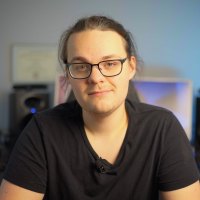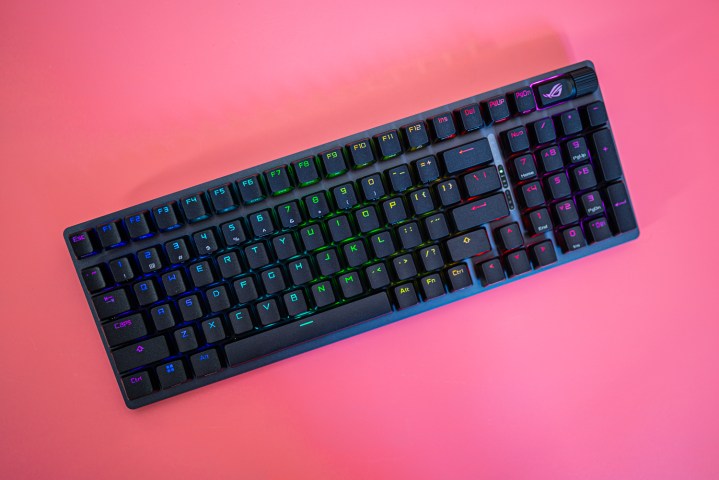
I didn’t expect much out of the Asus ROG Strix Scope II 96. The company impressed me earlier this year with the ROG Azoth, but the Strix Scope II 96 looked like a regression; a cheaper gaming keyboard designed for the mainstream, devoid of the enthusiast flair the company displayed with the Azoth. I’m happy I was wrong.
The Strix Scope II 96 can’t rival building your own keyboard, nor the many premium options from brands like Keychron, but it raises the bar for what you should expect out of a mechanical gaming keyboard that costs $180. Not only does it come with modern features like hot-swappable switches and three connection modes, but it also sounds and feels great right out of the box. And that’s coming from someone that winces at the sound of most mechanical gaming keyboards.
What makes it different?
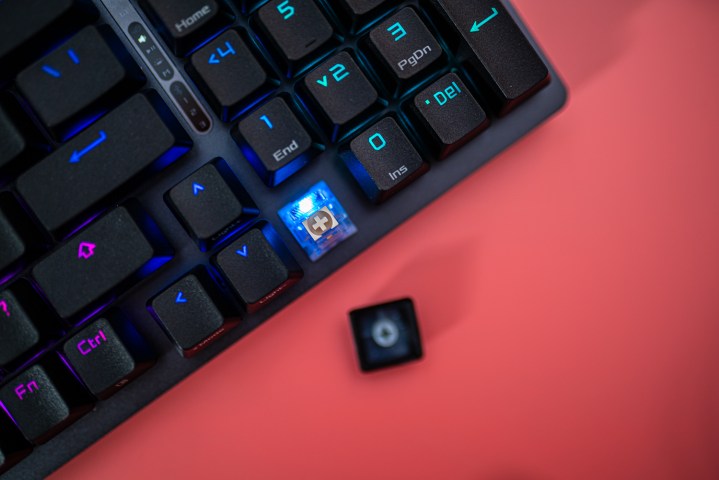
There are a few things that set the Strix Scope II 96 apart. First and perhaps most importantly are the new ROG NX Snow switches, which come factory lubricated and feel fantastic. This is the starting point of Asus’ second generation of NX switches, the company tells me, and I’m excited to see what they come up with next.
The switch closely mimics a Cherry MX Red. It’s a linear switch with an actuation force of 40 grams, but the actuation point and reset point are identical, allowing you to fly across the keys with ease. Factory-lubricated switches don’t always feel the best, but the NX Snows feel shockingly good. At least part of that is due to the Krytox 205G0 lubricant Asus uses — the gold standard for enthusiast-grade keyboards.

What contributes most to the excellent sound and feel of the keyboard, though, is the shell. You get silicon foam under the PCB, along with dampening switch pads above the PCB. This alone is one of the biggest things that separates the ROG Strix Scope II 96 from a keyboard like the Corsair K70 Pro RGB.
Most gaming keyboards, almost regardless of the brand, sound hollow and pingy. And that’s because, well, they’re hollow. It’s hard to overstate just how much a little board foam does to absorb sound and help your keyboard sound better. Combined with the switches, I’d have a hard time telling the Strix Scope II apart from a custom-built keyboard in a blind test.
Expensive but competitive
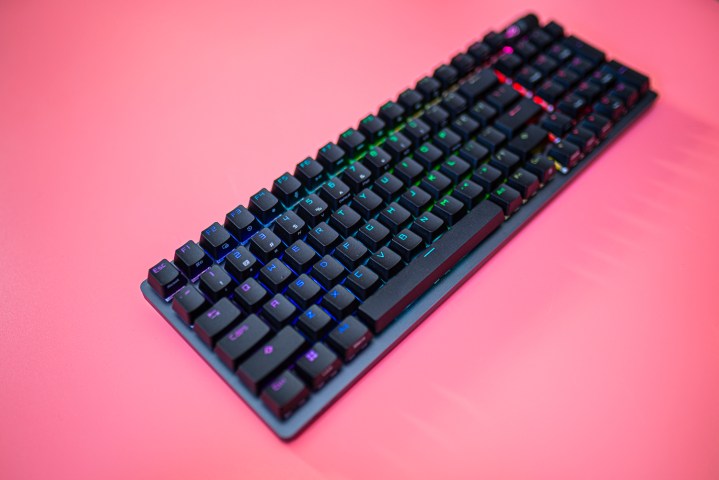
What really makes the Strix Scope II 96 shine, though, is its price. It’s $180, which isn’t cheap for a gaming keyboard, but it’s leagues ahead of what you’ll find with other brands. The aforementioned Corsair K70 Pro RGB is the same price with the optical OPX switches ($160 otherwise), and not only does it sound worse, it doesn’t support wireless and it lacks hot-swappable switches.
It’s not just Corsair. The SteelSeries Apex Pro is $200, and it comes with the same issues as the K70. If you want to upgrade to a wireless version, you’ll spend $250. And at that price, you’re better off building your own keyboard with a base like the Glorious GMMK Pro. Razer is perhaps the worst offender with pricing, with its BlackWidow V4 Pro clocking in at $230 without any wireless connectivity.
The price of the Strix Scope II 96 doesn’t seem that high by contrast. It lacks a few extras — the SteelSeries keyboard has an OLED screen, the Razer keyboard comes with better media controls, and Corsair offers its optical switches — but it’s easy to overlook those downsides considering how much better the Strix Scope II 96 sounds. It’s not as if the Strix Scope II is cheaply-made, either; it comes with a plastic bottom, but the top is all aluminum.
A few issues that are easy to overlook
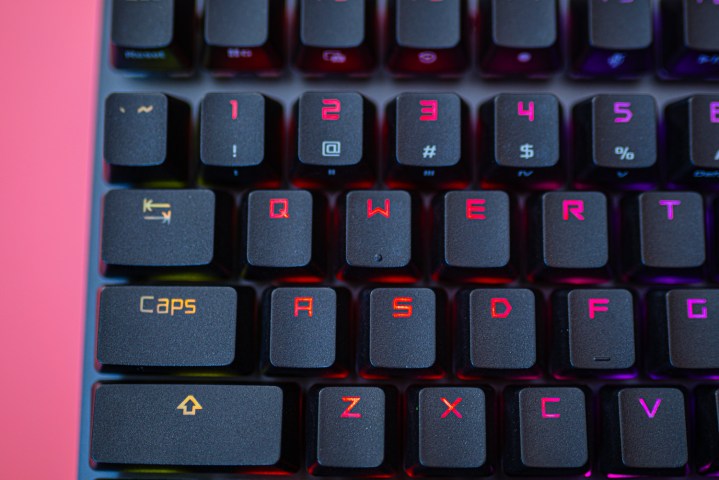
That doesn’t mean Asus’ new keyboard is above criticism. It’s the best option you can find for $180, but I have a bone to pick with the keycaps. They don’t feel or look great, and they’d be the first thing I would replace on the Strix Scope II 96.
The legends have a blocky, robotic look indicative of ROG keyboards, and the tops have a subtle graininess that I’m not a fan of. More than anything, though, I can’t stand the raised nub on the W key. These usually live on the J and F keys so you can find your home row, but Asus places it on the W key so you can quickly find your WASD placement. It just always feels like there’s a crumb under your finger while you’re playing games.
I’m also not a huge fan of Armoury Crate. The app is sluggish and prone to bugs, but it still enables a slew of customization options like macros, per-key RGB lighting, and key remapping. It also supports Aura Sync, so you can match it up with other Asus components.
Even with those issues, the price, sound, and feel of the Strix Scope II 96 puts it in a league of its own. It’s the perfect introduction to enthusiast keyboards, and it has enough flexibility to allow you to replace the switches and keycaps down the line. There’s really no contest — if you’re in the market for a mainstream gaming keyboard, the Strix Scope II 96 is the one to buy.
Editors' Recommendations
- The Asus ROG Ally just got a game-changing update
- I tested the three best 14-inch gaming laptops. There’s a clear winner
- We finally know the price of Asus’ most powerful gaming NUC
- This is the best gaming keyboard I’ve ever used — and you’ve never heard of it
- Gigabyte just upped its OLED monitor game


